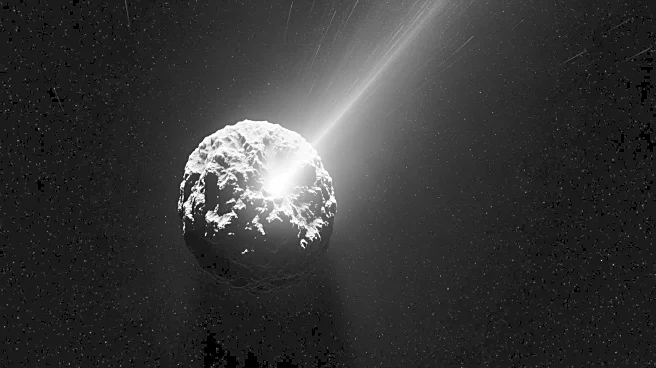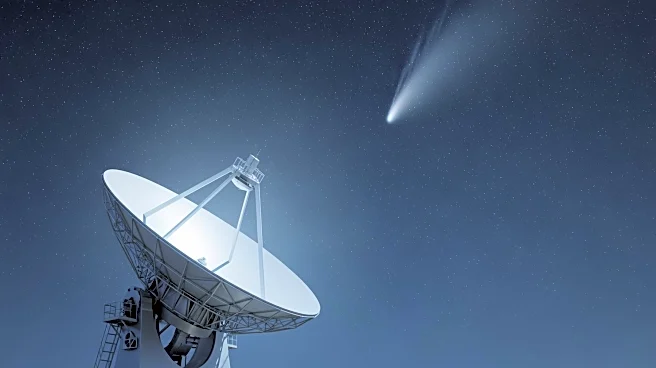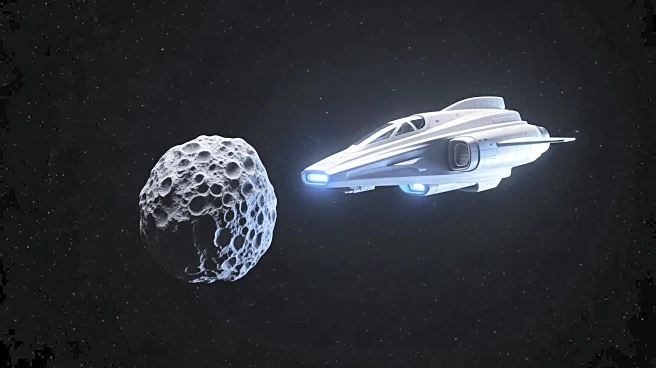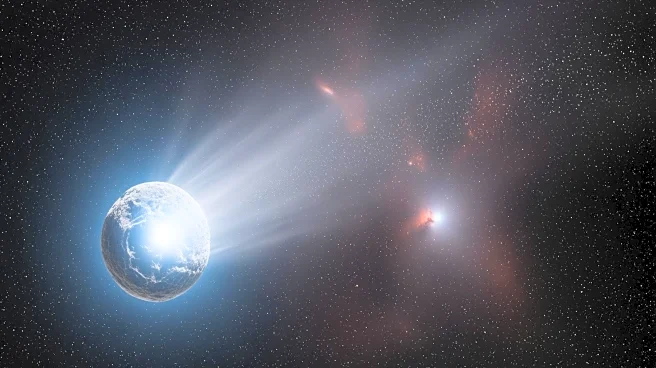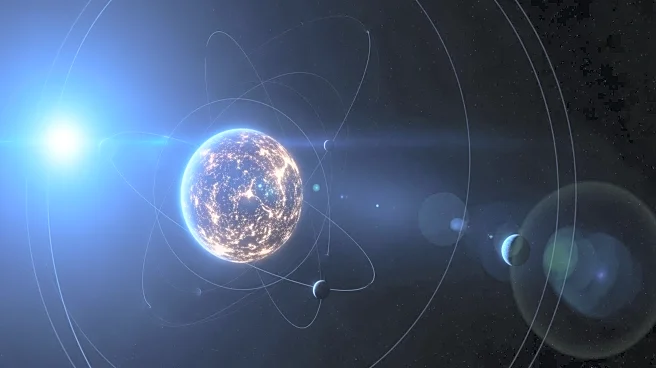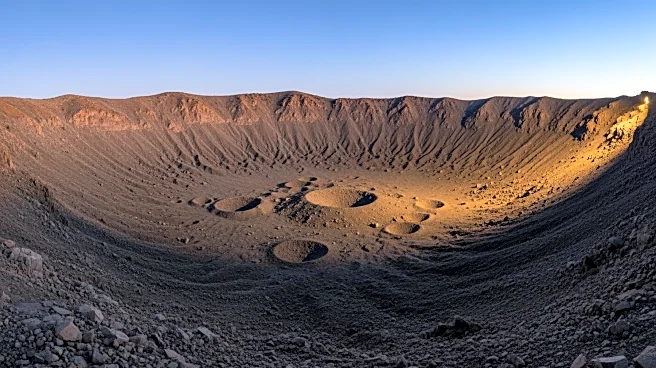What's Happening?
Recent research indicates that Theia, the celestial body that collided with Earth to form the moon, may have originated in the inner solar system alongside Earth. Scientists have reconstructed Theia's composition using isotope ratios from Earth and moon rock
samples, suggesting that both bodies formed from similar building blocks. This research provides insights into the early solar system's dynamics and the formation of planetary bodies. The study, published in the journal Science, explores the possibility that Earth and Theia were neighbors before their cosmic collision.
Why It's Important?
Understanding the origins of Theia and its relationship with Earth is vital for reconstructing the history of the solar system. The collision that formed the moon had significant implications for Earth's development, affecting its orbit, composition, and geological features. By identifying Theia's origins, scientists can refine models of planetary formation and migration, enhancing our knowledge of the solar system's evolution. This research also contributes to the broader field of planetary science, offering clues about the processes that shape celestial bodies.


